We have much more to do and your continued support is needed now more than ever.
8 Wonky and Wonderful Woodpecker Adaptations
Each winter I’m absolutely thrilled to see woodpeckers in the woods of Virginia. Woodpeckers are a welcome part of my cold weather hikes, when wildlife sightings become more rare. I’ve had a few looming curiosities about these birds. For example, how do they hammer trees all day without brain damage? Since they don’t sing, how do they communicate? It turns out that the answers lie in a few incredible adaptations that help woodpeckers survive.
1. Chisel-billed
Woodpeckers are often characterized as “chisel-billed” because they peck into living or dead wood to find grubs or build a nest. Cells in the tips of their beaks are constantly replaced, preventing them from wearing down over time.

2. Hole Shape
You might be able to tell which species of woodpecker was around by the shape of the holes left in trees. Pileated woodpeckers create a rectangular shape, which you can compare to the sapsucker pattern below.
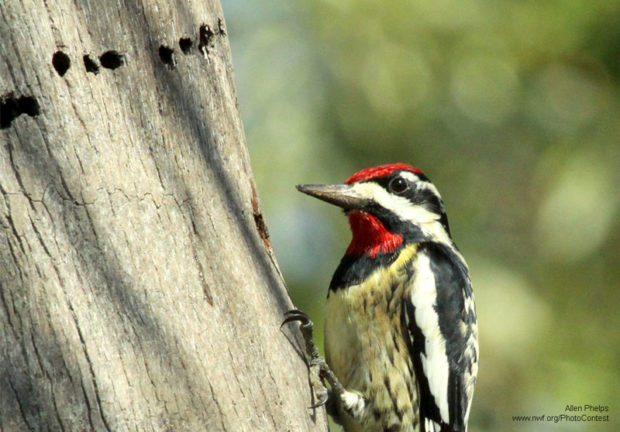
3. Tongue
Woodpecker tongues, however, vary based on their diet. Some species have a tongue that is longer than their bill in order to extract insects from a hole. Woodpeckers also have a lengthened hyoid apparatus (bones, muscle, cartilage connected to the tongue), allowing their tongue to extend incredible lengths. Red-bellied woodpeckers, for example, have a tongue extending up to three times the length of its bill! Meanwhile, sapsuckers have a shorter tongue with a brush-like tip to lap up sap from trees.
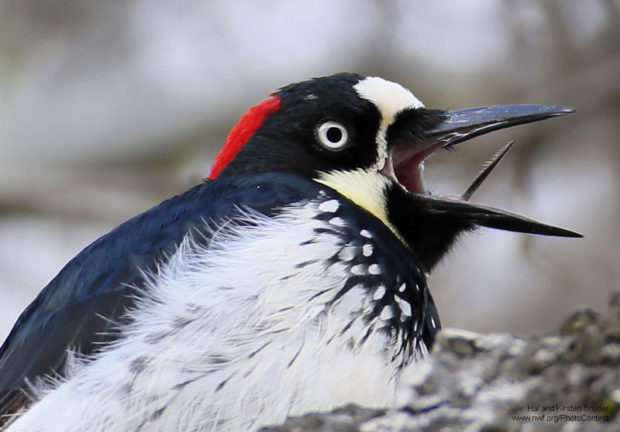
4. Tail Feathers
Woodpeckers use their stiff tail as a prop while climbing in order to balance themselves.
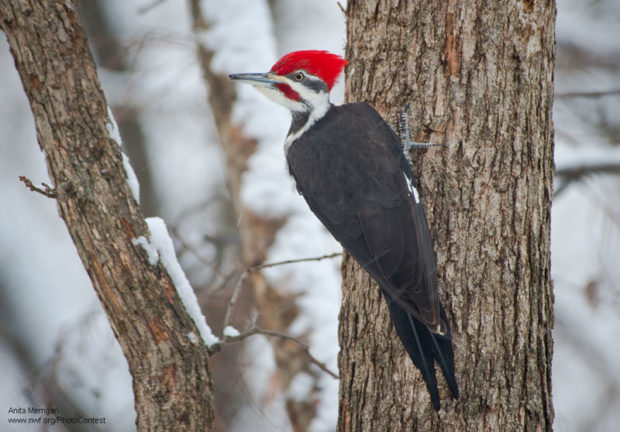
5. Feet
Their strong “zygodactyl” feet are specifically adapted to cling and grasp onto trees. Two toes face forward, and two face backward. Most songbirds have three forward-facing toes, and one backward-facing.
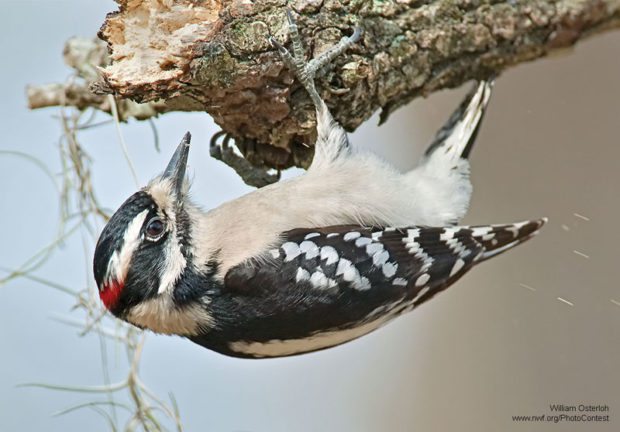
6. Brain Protection
They may peck a total of 8,000-12,000 pecks per day! Luckily, a woodpecker’s skull is built to absorb this shock. Sinewy attachments at the base of a woodpecker’s bill and around the brain help to minimize damage to the brain.

7. Drum Communication
Woodpeckers have a unique form of communication, called drumming. They rapidly peck on a resonant object to create a pattern of sound. They’ll do this to attract a mate or announce their territory. This is one reason woodpeckers might peck at your gutters.
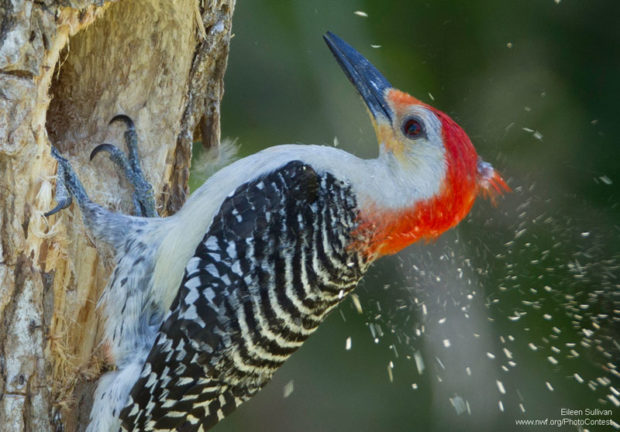
8. Nose Feathers
Woodpeckers have bristly feathers over their nostrils to prevent inhalation of wood particles as they chisel.

9. Eyes
With all the debris flying around as woodpeckers chisel, goggles would be helpful. Instead, they have a translucent third eyelid (called a nictitating membrane), which can be drawn across the eye for protection, while maintaining visibility. It also cleanses as it moves across the eye.

10. Food
Woodpeckers are all about their protein, whether from larvae, nuts or seeds. Suet — common in backyard feeders — can also be an important source of energy for woodpeckers.
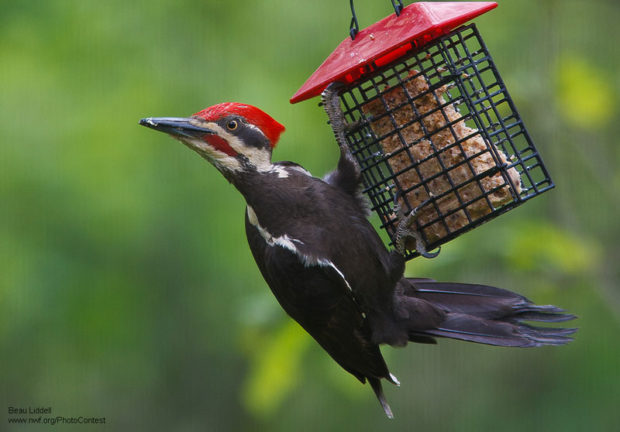
Enjoy Woodpeckers this Winter
You can attract woodpeckers to your yard by providing food or leaving snags. You’ll be one step closer to making your garden a habitat for wildlife!
Celebrate nature and wildlife this winter with a woodpecker holiday ornament, or symbolically adopt a red-headed woodpecker for a loved one. Take a look at more woodpecker gift items in our catalog.
![]() Help backyard birds and other native wildlife all year long by becoming a wildlife gardener!
Help backyard birds and other native wildlife all year long by becoming a wildlife gardener!




















